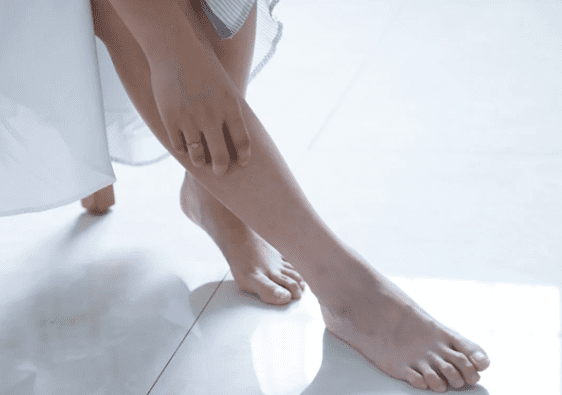If yoga is your exercise routine, you already enjoy all the benefits of this discipline. It’s not only physical training but also an aspiration to relax the mind and body and bring the whole body into balance. According to ancient teachings, imbalance in the body is the primary cause of health problems.
On the following page, find out about all the benefits of yoga:
https://www.verywellfit.com/top-health-benefits-of-yoga-3566733
Apart from the already mentioned health benefits, many prefer yoga as a form of training because it doesn’t require too much time and equipment. You can practice it anywhere, in nature, at work, or in the gym or workout studio. All you need is comfortable clothes and a suitable workout surface.
If you work out at a studio or fitness center, you probably use their exercise mats because they’re free. But that shouldn’t stop you from buying your exercise rug. It’ll be your own workout space, which matters for wear and tear and hygienic reasons. Also, you can take it with you, which might motivate you to exercise at home or in the garden.
If we’ve convinced you to finally get a quality yoga mat, here’s what you need to know before buying.
Which Style Do You Practice?
Those who have never practiced yoga probably have the wrong idea of it as an exclusively passive exercise that doesn’t include too many movements. Still, that doesn’t mean this training isn’t efficient. Depending on the style, it can be more or less intensive, activating every muscle in your body.
The preferred yoga style is your starting point when choosing an exercise mat. You might think that makes no difference, but the choice of exercise surface depends on the yoga style you practice.
For example, if you’re into more static training, such as Hatha, you need a more comfortable and lighter workout surface. You take poses that don’t require too many movements, but you have to hold them longer. And good cushioning is important for forearm standing or kneeling.
On the other hand, if you practice a more dynamic style of yoga like Ashtanga, you need a very robust and durable mat. Due to frequent movements, this carpet should be thinner not to hinder your moves. Also, choose textured surfaces to help you maintain a better grip when performing more demanding poses. Too much padding can interfere with your body balance.
Size
During yoga, you’ll strike different poses (asanas). Some will require you to lie down and touch the ground with your whole body. Others will force you to stretch and roll over. Whatever you do, you must feel comfortable and unhindered, as any obstacle when performing poses can ruin the balance you strive for.
The dimensions of the exercise mat depend on your body and height. When you stretch, all body parts should be on the same surface. So if you’re taller, you’ll need an extra-long version of the yoga mat. You can go with the extra wide model if you prefer more space for less restricted movements.
Thickness and Weight

As for the thickness, as said, it will depend on the yoga you practice, but also on the surface you practice on. The standard thickness is about one-eighth of an inch, and there are thicker and thinner models (from 1/4 to 1/16 inches).
The first ones are heavier, so carrying them around isn’t easy, but they’re super cozy. Thinner models can be uncomfortable if you practice too many static poses. Still, they enable better contact with the surface, which is essential, for example, when you flow between poses.
Keep in mind that the thickness of the rug doesn’t necessarily affect its weight. What matters more is the density of the weave, i.e., the material itself. It also affects comfort, as thicker mats tend to be better padded. Still, more millimeters in thickness don’t necessarily mean more comfort. For example, the exercise surface may be 1/8 inch thick, but if the material is compact and dense, the mat will be hard, stiff, and not too comfortable.
Choice of Materials
Regardless of the exercise style, size, and mat features, it must be made of ecological materials. Not only because of taking care of the environment but also because of your health. You spend a lot of time on this surface, sweat, and touch the mat with your body, often with your face. As you get in touch with some nasty stuff down there, at least you can choose an exercise mat that won’t cause irritation and discomfort.
There’s a wide range of materials on offer, which affects the price of this exercise accessory. Mats made of artificial materials such as PVC and TPE are budget-friendly, easy to wear and maintain, and almost don’t absorb sweat but are generally less durable. You can use them if you practice yoga from time to time.
On the other hand, more eco-friendly mats (as seen on rest and digest) made of natural rubber, cotton, jute, and even cork are more in tune with the very principles of yoga. Your body is in touch with natural materials that adhere perfectly to the surface and don’t have a harmful effect on the environment. They come in a variety of designs and are very durable, making them suitable for more intense yoga practice.
A special addition to this yoga accessory can be a layer of microfibers, which create a soft surface with excellent absorption power. These mats are a good choice for people who sweat a lot or for practicing Hot yoga, as well as for more active yoga styles. Microfibers might not offer an optimal ground fit, so don’t use them on slippery floors. These rugs don’t stick to your body and interfere with your movements.
You might think that choosing a proper yoga mat is no biggie, but it can make or break your exercise experience. This surface has to be cozy yet flexible enough to allow you to move freely and feel all the benefits of yoga poses.



